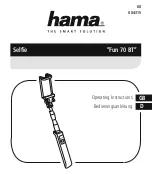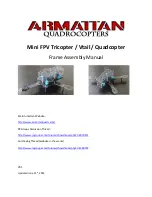
RECORDING MARCH 2006
13
at 12 o’clock position marked –7; the un-notched calibration
markings at left are, clockwise from bottom left, –21, –14,
–11, –9, and going clockwise from the top to the right they
are –5, –3, –2, and zero. Considering the tiny size of this knob
and the difficulty in reaching the exact same setting for two
speakers, the user would be best off choosing the notched –7
position for both speakers to insure balanced volumes.
The manual helpfully translates all these settings into
equivalent values for balanced professional use where the
recommended input sensitivity level is +4 dBu. The center-
notched position then corresponds to 5.4 dBu, the extreme
left is 19.4 dBu, the extreme right is –1.4 dBu.
The manual also states values for all these knob positions
in V—at the extreme left it’s 7.2 V, at the notched center
position it’s 1.4 V, fully to the right it’s 0.66 V.
These values, plus the overload light in front, should
make it easy to set up healthy relationships between audio
sources and PM5 inputs.
This line of items concludes with, on the right, two 3-position
attenuation switches, for bass and treble. A graph beneath
these switches shows their effect—see the facing page.
Sound
You wouldn’t expect much bass from boxes of this modest
size, and you could be somewhat wrong. The PM5 delivers
nothing earth-shattering by today’s hyped low-end standards,
but you can hear what is going on in the bass, and when mon-
itoring at modest levels, well below 85 dB for loud passages,
I would call the amount of bass just about adequate. As you
crank the volume, the remainder of the spectrum runs away
from the bass and you begin to lust after a sub. [
E-MU
announced as we went to press that it will ship the PS12 200W
subwoofer in April, price and technical details to be
announced.—MM
] What there is sounds well-rounded with
quite good definition.
The trouble in a small home setup is this, though: As you
crank the volume for more bass, the room starts to act as
a bass enhancer, and if you hear a lot of bass, you might
not be sure that it is what the speaker itself produces pri-
marily, so you might be better off keeping it down unless
you’ve done serious work on your room. It’s more impor-
tant to remain close to the speakers, to set them up with
the tweeters at ear height, forming an equilateral triangle
with the listener’s head, and (wishful thinking, I know)
hopefully without any intervening surfaces, like the top of
a mixing console, splashing sound around.
The mids are quite bold on this speaker. Female voices in
particular seemed to stand out front a bit more than I’ve heard
from other systems lately. The tonality is fine, the voices are
not made to sound harsh or otherwise unduly colored. But it is
a monitor, not a smiley-face hi-fi speaker—raising the fader of
a midrange source by a single dB is immediately heard, so mix-
ing vocals should be an enjoyable task on the PM5. As always,
check the work in progress on vastly different speakers, in this
instance to make sure you didn’t back off on the voices to a
degree that would leave them shy on other speakers.
The highs are very present, strings sizzled, triangles and
piccolo flutes had all the cutting quality they should have,
and drummers’ brushes swished convincingly.
Overall I found a bigger sound from the PM5 than might be
expected from a box of its size. The PM5 is meant for close-
field monitoring, and that it does well. It provides a generous
stereo field for the home recordist, and while it doesn’t have
exceptional sonic depth, the PM5 should be considered where
well-informed monitoring in restricted spaces is required.
Price:
$349.99 each (street price around $500/pair)
More from:
E-MU Systems, Inc., 1500 Green Hills Rd.,
Scotts Valley, CA 95067. 831/438-1921, www.emu.com.
REC mag 03-06 GL2 1/27/06 9:59 AM Page 13




















